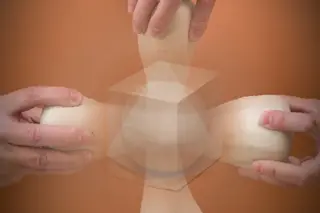Imagine waking up in a Salvador Dalí painting. You reach over to hit the snooze button on your alarm clock, only to discover that it oozed into a puddle during the night. The sun rising outside your window illuminates an elephant tottering down the street, its legs impossibly skinny stilts a hundred feet tall.
In this fantastic reality, everything is slowly but continuously distorting itself. Your coffee mug morphs into a doughnut, as if made of putty that’s been pinched and pulled. Breakfast is a confusing experience, as everyday items lose their identities.
This may sound like a bad trip. We all know that things in the real world tend to have fixed shapes; the letter L is different from the letter M. But in the funhouse world of topology, a field of mathematics that is slowly reshaping how we think about the world, the usual rules don’t apply. Its ...















